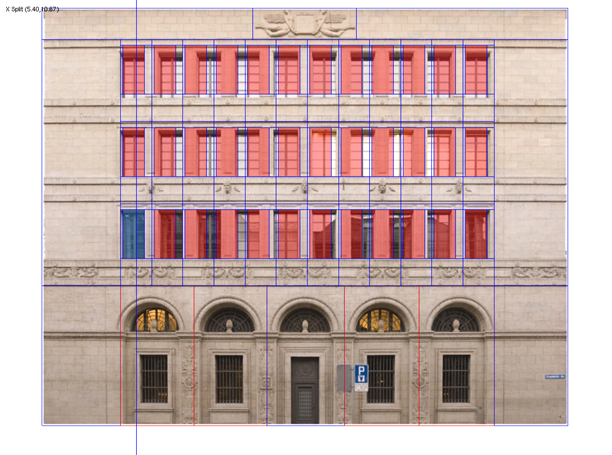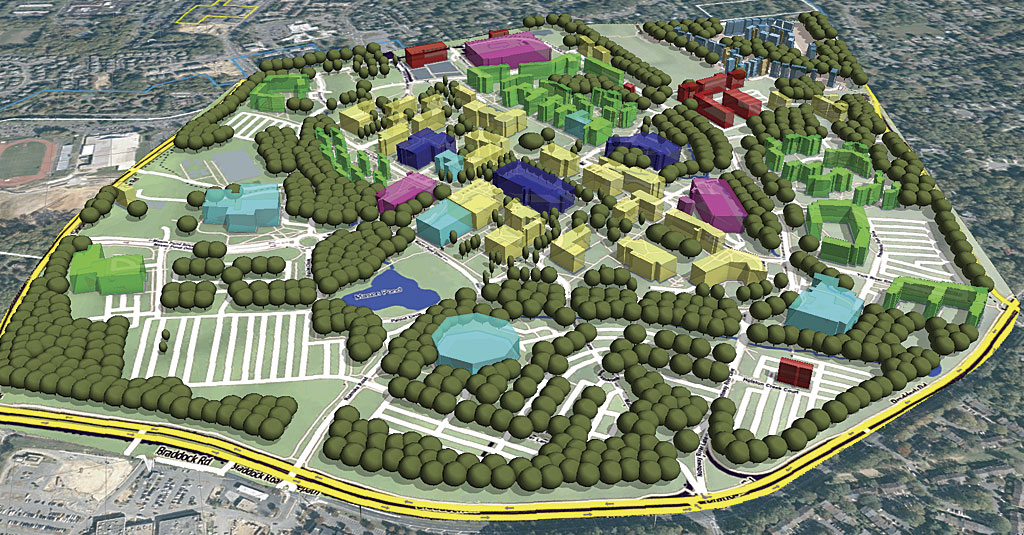
The Current Mouse Scheme drop-down menu lists the available schemes of other 3D apps. The building rules in this tutorial have a small set of attributes to actually design the building, especially the overall building volume. Rather than listing all nine texture names as single assets, the function in step 2 returns one of the nine window textures in the asset folder. Tutorial 6: Basic shape grammar-CityEngine Tutorials | ArcGIS Desktop The options are shown in the following table. Many people may find this quite intuitive and more flexible, especially for small to medium-sized contexts. They differ not only due to the existence of an entrance, but often also due to different sized floor heights, window appearance, color, and so on. The width and height of the scope are not affected since relative coordinates are used: You’ll use them now. Now you’ll copy all necessary files from the cityengime Tutorial 1 project into your new project. Finally, we move our focus to the exterior space and add seri elements. We increase the amenity of the entrance by adding a water basin and trees. You’ll analyze a finished rule file that contains all the steps to create a basic building. The height is now defined as a random value between 15 and The Groundfloor rule refines the groundfloor shape cityengins a similar subdivision split, with the difference that an entrance is placed on the right. The mass model is created with the extrude operation as follows. The result of this section will look like the following image: The predefined styles for usage mixes, footprint shapes, and the ability to create grid-like arrays make this process substantially esgi simple. Selects all objects completely within the selection rectangle. Using the operation s x,y,zthe size of the scope can be set in the Esr rule. The modes are also listed in the Selection Tool submenu in the toolbar. Later in this tutorial, you’ll need rule files and assets for the generation of the building models. As you will see, CityEngine can be used in multiple contexts, disciplines, and planning phases for your projects.Įssential Skills project, which you should already have linked to your workspace. You’ll now create a low resolution version in a few steps.

The appearance of the ground floor is often different from the other floors, especially for front facades. This rule file is executed when the generation is triggered. Once you have a selection, the right mouse button context menu contains entries with which you can select additional elements.

Approximately streets were created, but you can’t see them all in the viewport until you frame the view. Otherwise LOD equals zerodo not load the window asset, but use a simple plane coming from the facade instead. In this section, you’ll add a simple level of detail LOD mechanism to your simple building.
CITYENGINE ROOF TEXTURE PDF
LIBRO HISTORIA DEL PENSAMIENTO ECONOMICO DE LANDRETH Y COLANDER PDF Tutorial 1: Essential skills-CityEngine Tutorials | ArcGIS DesktopĬityEngine is a procedural modeling application. Of course, urban planning processes are typically reaching a much higher level of complexity than the simplified case described in this tutorial.
CITYENGINE ROOF TEXTURE WINDOWS
This way, the windows and textures are set back 0. The default folders that store your project data, such as assets, rules, and scenes, are already present, though empty. Next, the floors are further broken down into elements called tiles floor subdivisions. Since writing custom distribution rules for building placement patterns can result in quite complex CGA code, we propose in this tutorial to simply use either point shapes or manually created footprint shapes of any form, as a faster way to control the footprint distribution. The following image shows the rule set applied to arbitrary mass models: The Roof rule prepares the UV coordinates to cover the entire roof face, sets the roof texture, and applies the texture coordinates to the geometry. The following figures depict the extruded mass model first and the described decomposition into floors and tiles below. The left-to-right rectangular selection is usually used to select tiny objects such as single Street Graph Nodes when there are many objects occupying the same space. You’ll use textured planes instead of the complex window asset. The actual creation of the building starts now. This tutorial describes how CityEngine can be used to work for typical urban planning tasks. First, you’ll create a new CityEngine project.

CITYENGINE ROOF TEXTURE HOW TO
Learn how to work with typcial urban centers and develop a schematic design for this area that meets the city’s zoning regulations.


 0 kommentar(er)
0 kommentar(er)
